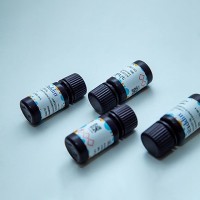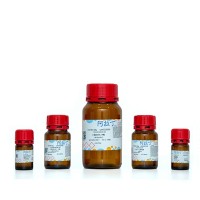The Polymerase Chain Reaction (PCR)
互联网
Topics
• What is the Polymerase Chain Reaction?
• History and (pre-history) of PCR
• How PCR works
• Optimising PCR
• Fidelity, errors and cloning
• PCR primer design
• Applications of PCR
What is the Polymerase
Chain Reaction?
• It’s a means of selectively amplifying a particular segment of DNA.
• The segment may represent a small part of a large and complex mixture of DNAs:e.g. a specific exon of a human gene.
• It can be thought of as a molecular photocopier.
A Molecular Photocopier
• A photocopier capable of duplicating a part of a sentence:
• “The next day was quite a different day. Instead of being hot and sunny, it was cool and misty. Pooh didn’t mind for himself, but when he thought of all the honey the bees wouldn’t be making, a cold misty day always made him feel sorry for them.” A.A. Milne, 1928.
• The words in blue must be unique for the copier to locate the correct piece of text.
How Powerful is PCR?
• PCR can amplify a usable amount of DNA(visible by gel electrophoresis) in ~2 hours.
• The template DNA need not be highly purified — a boiled bacterial colony.
• The PCR product can be digested with restriction enzymes, sequenced or cloned.
• PCR can amplify a single DNA molecule,e.g. from a single sperm.
Gene Analysis Prior to PCR?
• Southern blotting (1975) permitted rudimentary mapping of genes in unrelated individuals (RFLPs, insertions & deletions).
• DNA sequencing (1978) required genes to first be cloned into plasmid or λ vectors.
• Gene library construction and screening could take many months and libraries had to be made for each individual analysed.
The Invention of PCR
• Invented by Kary Mullis in 1983.
• First published account appeared in 1985.
• Awarded Nobel Prize for Chemistry in 1993.
Did He Really Invent PCR?
• The basic principle of replicating a piece of DNA using two primers had already been described by Gobind Khorana in 1971:– Kleppe et al. (1971) J. Mol. Biol. 56, 341-346.
• Progress was limited by primer synthesis and polymerase purification issues.
• Mullis properly exploited amplification.
The Basics of PCR Cycling
• 30–35 cycles each comprising:
– denaturation (95°C),30 sec.
– annealing (55–60°C),30 sec.
– extension (72°C),time depends on product size.
What’s in the Reaction?
• Template DNA
• Reaction buffer (Tris, ammonium ions(and/or potassium ions), magnesium ions,bovine serum albumin)
• Nucleotides (dNTPs)
• Primers
• DNA polymerase (usually Taq)
PCR In Detail
• Denature, anneal, extend and repeat the cycle 30 to 35 times.
• “How does the polymerase know to stop when it reaches the other primer?”
• Most textbooks to not fully explain PCR.
• PCR animation at Dolan DNA Learning Center, CSHL, Cold Spring Harbor.
How many copies?
• No target products are made until the third cycle.
• The accumulation is not strictly a doubling at each cycle in the early phase.
• At 30 cycles there are 1,073,741,764 target copies (~1×109).
• There are also 60 other DNA copies.
How many cycles?
• Increasing the cycle number above ~35 has little positive effect.
• The plateau occurs when:
– The reagents are depleted
– The products re-anneal
– The polymerase is damaged
• Unwanted products accumulate.
Thermal Cyclers
•PCR cyclers available from many suppliers.
•Many block formats and multi-block systems.
•Reactions in tubes or 96-well micro-titre plates.


So, I Can Just Go Ahead?
-Not so fast.
-The PCR technique and the use of Taq DNA polymerase in PCR are both patented.
-Even academic and public organisations must pay license fees — levy paid on enzyme and thermal cycler purchases.
-Taq patent still being challenged (Promega).
Has It Worked?
• Check a sample by gel electrophoresis.
• Is the product the size that you expected?
• Is there more than one band?
• Is any band the correct size?
• May need to optimize the reaction conditions.
Optimising the PCR Reaction
• Annealing temperature of the primers.
• The concentration of Mg2+ in the reaction.
• The extension time.
• (The denaturing and annealing times.)
• (The extension temperature.)
• (The amount of template and polymerase—“more is less”.)

Optimising the Annealing Temperature
• Primers have a calculated annealing temperature (e.g. 54°C).
• Temperature must be confirmed practically.
• Temperature steps of 2°C above and below.
• Use gradient cycler.
Optimising the Mg 2+
Concentration
• The fidelity of the PCR depends on[Mg2+].
• Vary [Mg2+].in stepsof 0.5 mM.
• Sometimes a compromise between yield and specificity.
Fidelity of the Reaction
• Taq DNA polymerase lacks the 3´→5´proof-reading activity commonly present in other polymerases.
• Taq mis-incorporates 1 base in 104.
• A 400 bp target will contain an error in 33% of molecules after 20 cycles.
• Error distribution will be random.
Do Errors Matter?
• Yes, if you want to clone the amplified DNA — an individual molecule may harbour several mutations.
• No, if you want to sequence the amplified DNA or cut it with restriction enzymes.
• Use a proof-reading thermo-stable enzyme rather than Taq.
How Big A Target?
• Amplification products are typically in the size range 100-1500 bp.
• Longer targets are amplifiable — >25 kb.
• Requires modified reaction buffer, cocktails of polymerases, and longer extension times.
• Limited by the integrity of the starting target DNA — > 50 kb.
Can I PCR Amplify RNA?
• Not directly — the DNA polymerase requires a DNA template and will not copy RNA.
• mRNA can first be copied into cDNA using reverse transcriptase.
• cDNA is a template for PCR —it need not be double-stranded.
Cloning PCR Products
• Products should be ligatable into bluntended restriction enzyme site.
• Lower than expected efficiency.
• Products are not truly blunt-ended.
• Taq polymerase adds a single nontemplated base (usually A) to the 3´ end:
NNNNNNN…NNNNNNNA
ANNNNNNN…NNNNNNN
TA Cloning of PCR Products
• Take advantage of the non-templated bases.
• Linearise vector at a blunt-ended site (e.g.EcoRV).
• Incubate linear vector with Taq polymerase and dTTP to add non-templated Ts.
• Ligate:

Designing PCR Primers
• Primers should be ~20 bases long.
• The G/C content should be 45–55%.
• The annealing temperatures should be within 1°C of one another.
• The 3´-most base should be a G or C.
• The primers must not base pair with each other or with themselves or form hairpins.
• Primers must avoid repetitive DNA regions.
Primers That Form Hairpins
• A primer may be self-complementary and be able to fold into a hairpin:
• The 3´ end of the primer is base-paired,preventing it annealing to the target DNA.
Primers That Form Dimers
• A primer may form a dimer with itself or with the other primer.
• Primer dimers can be an excellent, but unwanted, substrate for the Taq polymerase.
Help With Primer Design
• Researchers agreed early on that the design of PCR primers was difficult and unreliable.
• Computer programs devised to take all of the design criteria into account.
• Primer3 program at the Whitehead Institute is the most reliable and versatile tool currently available.
Primers for a COL3A1 variant
• The human COL3A1 gene has a variant at amino acid 531 of the triple helix.
• Ala or Thr encoded in exon 31 of the gene.
• AluI restriction enzyme site present in the Ala allele but absent in the Thr allele.
• PCR amplify the region and genotype by digestion of PCR products with AluI.
Running Primer3
• Paste the DNA sequence into Primer3 with the “target” enclosed in square brackets.
• Select a mispriming library — only human and rodent available at present.
• Select option for a 1-base 3´ “GC Clamp”.
• Select PCR product size range (>600 bp).
• Click the “Pick Primers” button.
• Marvel at the ease and simplicity.
The COL3A1 Ala/Thr PCR
• The PCR primers amplify from the start of exon 31 to just beyond exon 33 — 656 bp.
• Ala alleles are digested by AluI, producing fragments of 82 & 574 bp.

Will Other Genes Amplify Too?
• The primers have been designed on the basis of the DNA sequence of a single gene.
• Might the primers also amplify other segments whose sequence we have not taken into account?
• Need to consider the sequence of the entire genome to answer this.
Virtual PCR Results
• Virtual PCR searches entire genome looking for potential primer sites within 10,000 bases of one another.
• If found, it performs a virtual PCR reaction.
• Primers for Ala/Thr polymorphism in human COL3A1.
Applications of PCR
• Mutation testing, e.g. cystic fibrosis.
• Diagnosis or screening of acquired diseases,e.g. AIDS.
• Genetic profiling in forensic, legal and biodiversity applications.
• Site-directed mutagenesis of genes.
• Quantitation of mRNA in cells or tissues.
Multiplex PCR
• PCR reactions can be devised in which several targets are amplified simultaneously—often used in diagnostic applications.







